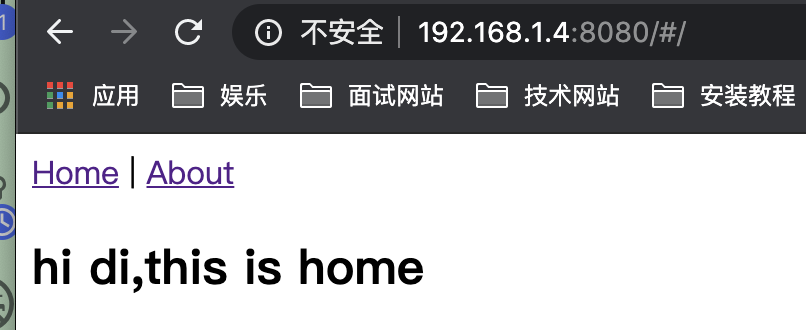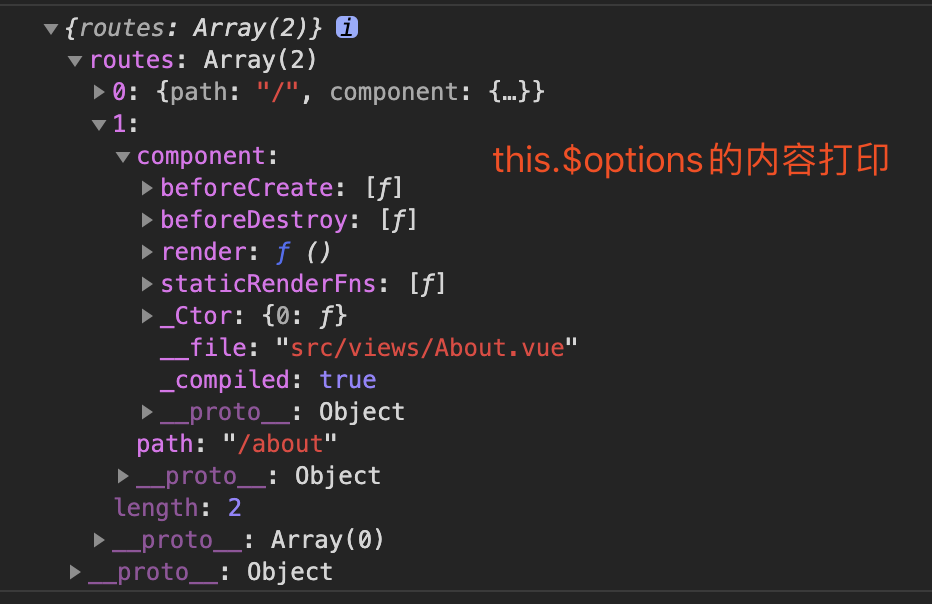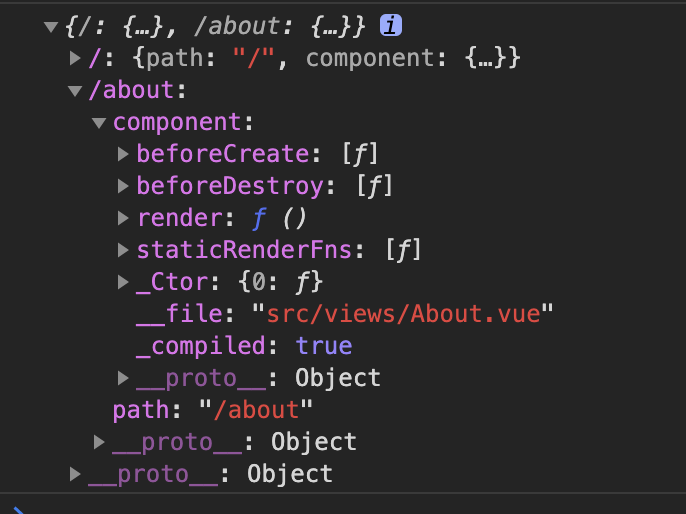前言
目标是自己实现一个vue-router插件,路径是hash模式
实现
vue-router插件代码(DiRouter)
下面的代码中会有详细注释,解释为什么要这么写
插件目录位置src/di-router/index.js
let Vue; class DiRouter{ //Vue.use使用插件的时候,会给插件内部的install方法传递Vue构造函数,所以这里需要添加一个install方法来接受传递过来的Vue static install(_Vue){ Vue = _Vue; } constructor(options){ //接收传递过来的配置项,内容见解释A this.$options = options; //定义解析routes对象的变量 this.routeMap = {}; //定义路由的地址,使用Vue的方式是为了利用data的响应式,当curr改变时,所有关联了curr的视图也会发生改变 this.app = new Vue({ data:{ curr:"/" } }) //调用初始化方法 this.init(); } init(){ //1、绑定路由事件 this.bindEvent(); //2、创建路由对象 this.createRouteMap() //3、创建组件 this.createComponents(); } bindEvent(){ //当页面加载完成执行一次视图更新.之后每次通过hashchange来执行更新 window.addEventListener("load",this.handleChange.bind(this)); window.addEventListener("hashchange",this.handleChange.bind(this)) } handleChange(par){ //更新视图 var hash = this.getHash() || "/"; this.app.curr = hash; } getHash(){ return location.hash.slice(1); } createRouteMap(){ this.$options.routes.forEach((item)=>{ //routeMap的值见解释B this.routeMap[item.path] = item; }) } createComponents(){ //模拟vue-router内置组件router-view和router-link Vue.component("router-view",{ render:h=>{ var component = this.routeMap[this.app.curr].component; return h(component) } }) Vue.component("router-link",{ //router-link会接受父组件传入的to参数 props:{ to:{ type:String, required:true } }, render:function(h){ return h("a",{ attrs:{ href:`#${this.to}` } }, this.$slots.default ) } }) } } export default DiRouter;
自定义DiRouter组件的路由表配置
在src/router/index.js中
import Vue from "vue"; import DiRouter from "../di-router"; import Home from "../views/Home.vue" import About from "../views/About.vue" Vue.use(DiRouter); const router = new DiRouter({ routes:[ { path:"/", component:Home }, { path:"/about", component:About } ] }) export default router;
自定义DiRouter组件的路由使用
在main.js中引入
import Vue from 'vue' import App from './App.vue' import router from "./router" new Vue({ router, render: h => h(App) }).$mount('#app')
在App.vue中使用
<template>
<div id="app">
<router-link to="/">Home</router-link> |
<router-link to="/about">About</router-link>
<router-view/>
</div>
</template>
组件about.vue
<template>
<div class="about">
<h1>hi di ,this is about</h1>
</div>
</template>
组件home.vue
<template>
<div class="home">
<h2>hi di,this is home</h2>
</div>
</template>
展示效果
启动yarn dev

点击about

详细信息表
解释A

解释B
